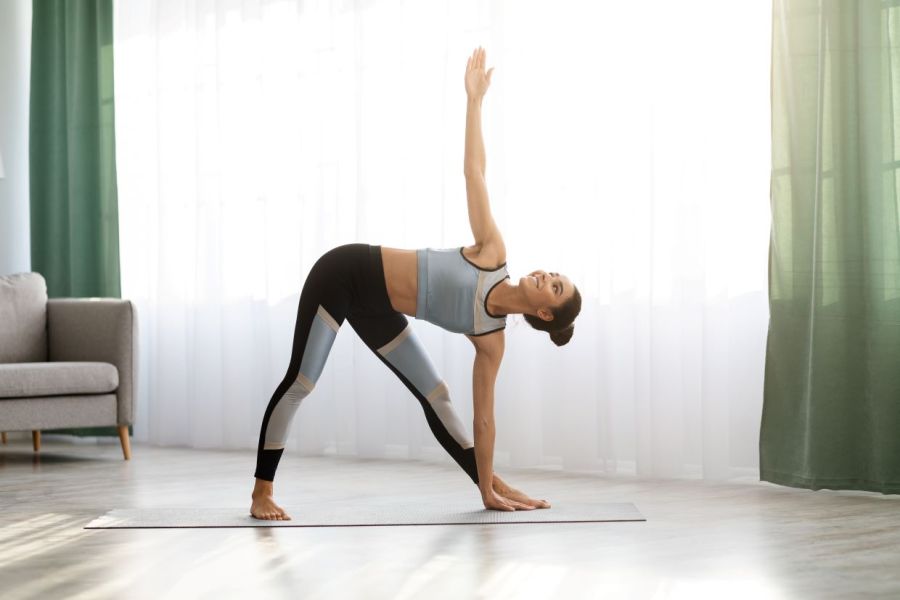Looking to improve your core strength during your yoga practice? Let’s take a closer look at the anatomy of your abs along with the best yoga poses to target these all-important muscles…
Looking for strong and healthy abs? The benefits go far beyond a six-pack. Indeed, training your abdominal muscles helps improve your posture, enhance your balance and reduce the risk of lower back pain.
Related: 10 minute yoga abs workout to strengthen your core
Toned abs help boost your sporting performance, too, as if weak they can lead to greater fatigue, poorer endurance and more injuries. Of course, strong abs also have a range of functional benefits you’ll appreciate on a daily basis – from breathing better to carrying the shopping or lifting the kids.
And when it comes to your yoga practice, strengthening your abs with targeted asanas will help make poses previously thought unreachable
well within your capabilities.
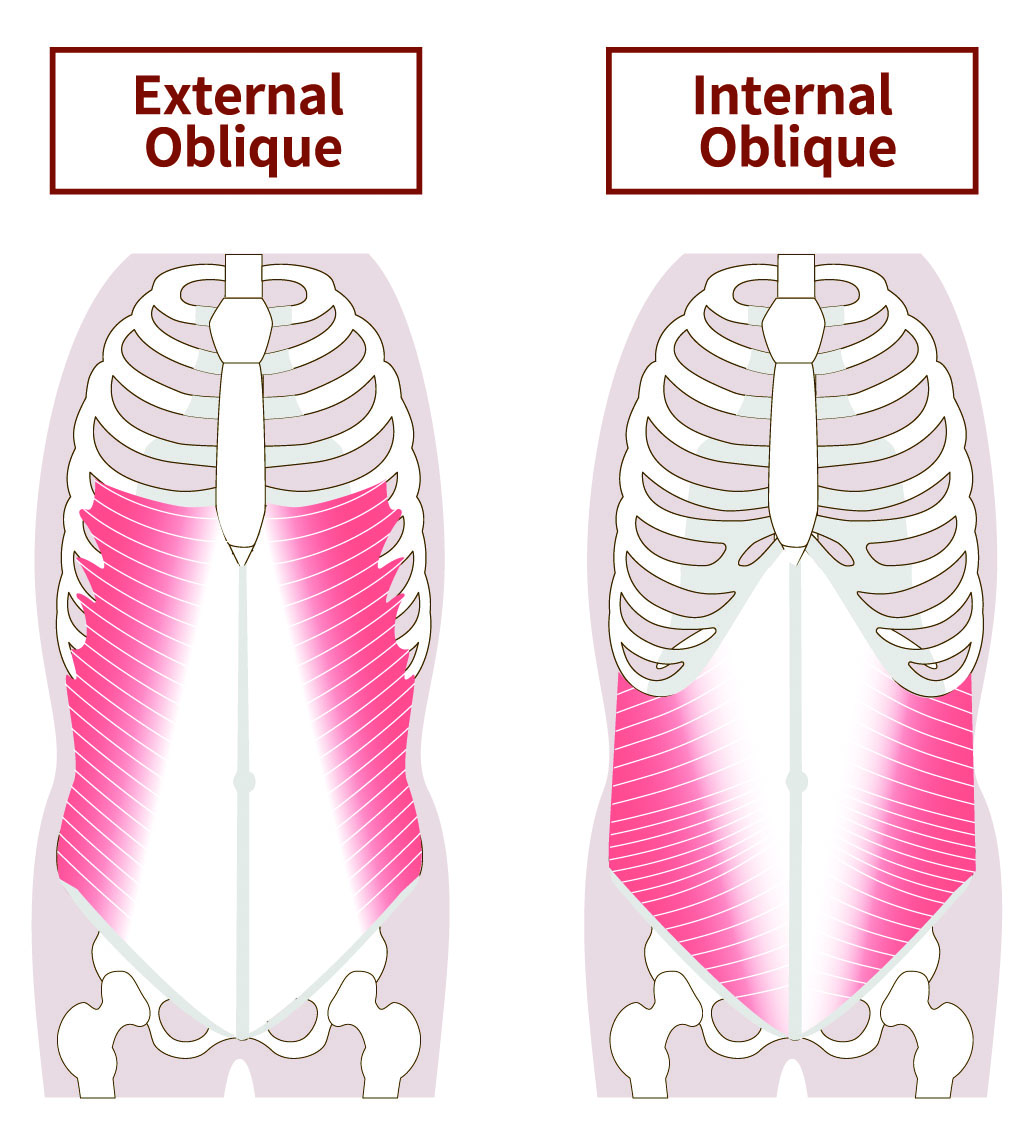
Anatomy of the abdominal muscle groups
Abs anatomy: the four abdominal muscles
First up, a little anatomy. Your abs consist of four main muscles. The deepest layer, the transverse abdominis, is located between your ribs and pelvis, wrapping around your middle from front to back. Its fibres are horizontal so, when contracted, draw in your torso and help maintain the right level of pressure in your abdomen.
The familiar six-pack comes courtesy of rectus abdominis, the top layer of your abs. It’s actually two parallel muscles with vertical fibres, separated by a length of connective tissue which runs the length of your torso. As well as enabling you to bend forwards, it compresses your belly area and supports abs stability. The final two muscles, the internal and external obliques are responsible for twisting your body from side to side.
Related: Ab workouts for women
What are the internal and external obliques?
Take a deeper dive into these important abdominal muscles…
- Anatomy: External obliques, the largest and the most superficial of the side abdominal muscles. They begin on your lower eight ribs and run diagonally to your front hip (iliac crest). Internal obliques, a broad thin sheet of muscle lying beneath the external obliques. They begin on the iliac crest and run diagonally to the lower three or four ribs.
- Action: The external obliques help rotate the trunk, while the internal obliques flex the trunk and compress and stabilise the abs, helping support the internal organs against the pull of gravity.
- Everyday use: Digging, raking Sports use: Boxing, tennis, baseball, rowing, gymnastics
- Common problems: Lumber spine/lower back issues
- Stretching pose: Bridge or wheel
- Strengthening pose: Reclining twist, knees together
Best yoga poses for core strength & stronger abs
How to complete these yoga poses for core strength:
Aim to complete the following sequence once or twice a week. The more consistent you are, the quicker you’ll see results. Warm up the spine in all directions, forward and back, sideways and with rotations (try cat/cow, tiger pose, child’s pose with arms extended to each side and thread the needle), then perform each pose in order for 5 deep breaths and repeat on both sides of the body. Take a rest in child’s pose, then repeat the sequence, finishing with a few minutes in savasana.
Related: What is yoga? Benefits & basic principles for beginners
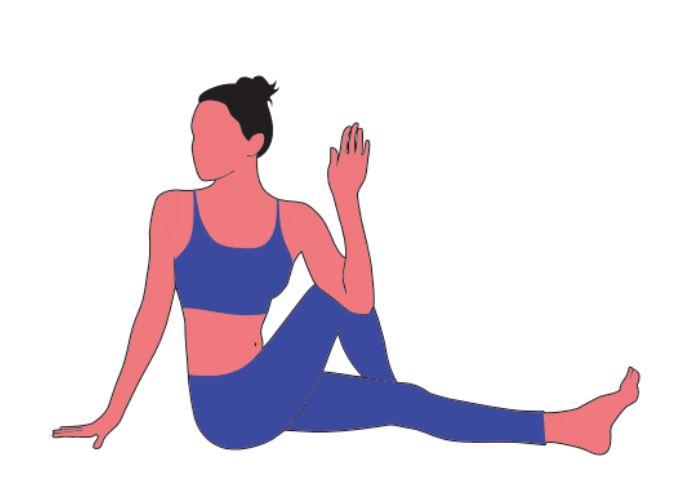
Seated twist
- BENEFITS: Wakes up the muscles along your spine, helps prevent injury when twisting in sports or everyday life
- ABS FOCUS: On the side you twist towards: external obliques engage, internal obliques stretch. The reverse occurs on the side you twist away from
- ALIGNMENT: Sit evenly on both hips. Lengthen the spine on an inhalation, twist on the exhalation. Draw in the kidney area on the side you twist towards. Make it harder by folding the bottom leg, taking the foot towards the opposite buttock.
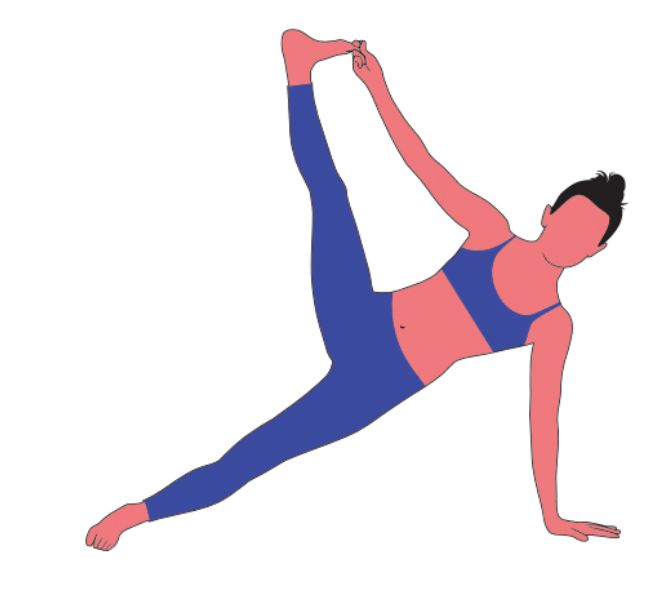
Side plank
- BENEFITS: Strengthens abdominals, while shoulders, arms and legs work hard to maintain balance
- ABS FOCUS: Rectus abdominis, transverse abdominis and your obliques engage to keep the spine stable and compress internal organs
- ALIGNMENT: Keep feet, hips and shoulders stacked vertically, don’t let hips dip. Make it easier by resting on your lower forearm; make it harder by raising your top leg (pictured) or by scooping your top arm under your torso, rotating your trunk as you do so.
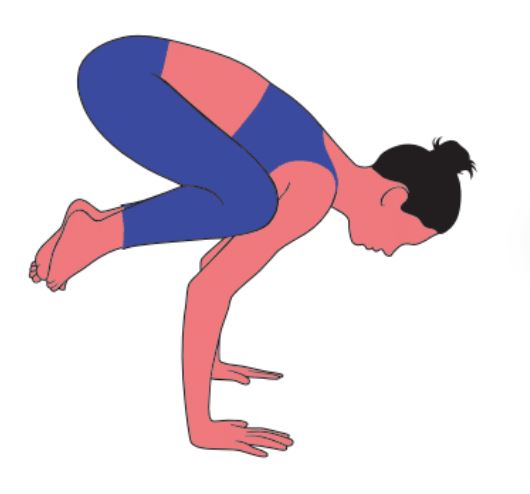
Crow
- BENEFITS: Wrist, arm, shoulder and abs strength, and balance
- ABS FOCUS: Although your arms are working hard, abs strength is key, supporting you and keeping you stable. Engage transverse abdominis before lifting feet to ensure good balance.
- ALIGNMENT: Spread fingers wide, hands shoulder-width apart. Rest your knees on your upper arms and gradually transfer your weight to your hands. Focus on the floor about 50cm in front of you to aid your balance. Make it easier by switching to tripod pose, like a headstand with palms on the floor, but knees resting on your upper arms.
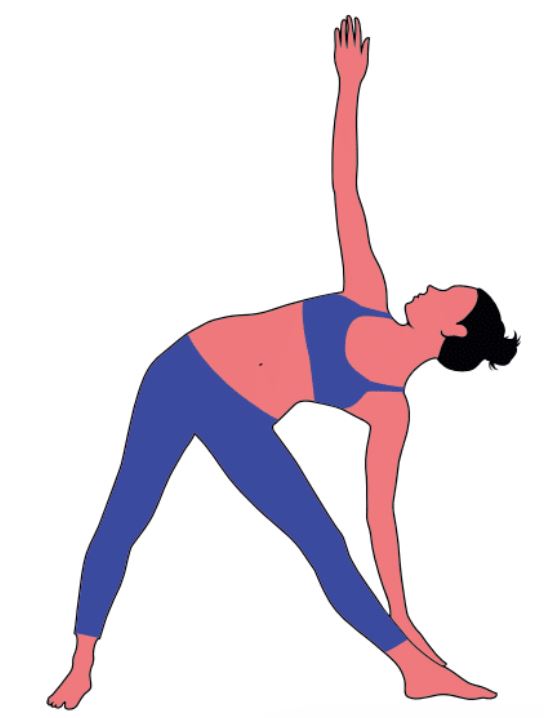
Triangle
- BENEFITS: Strengthens the legs and abs, leaving you feeling grounded
- ABS FOCUS: Transverse abdominis engages to give stability to spine. External obliques stretch and internal obliques rotate the spine on upper side, external obliques rotate spine on lower side.
- ALIGNMENT: Align the back heel with the front arch. Internally rotate the back hip and externally rotate the front hip. Rest lower hand on shin, foot or floor, whichever maintains best form, and focus on lower side waist (external obliques) to power the twist.
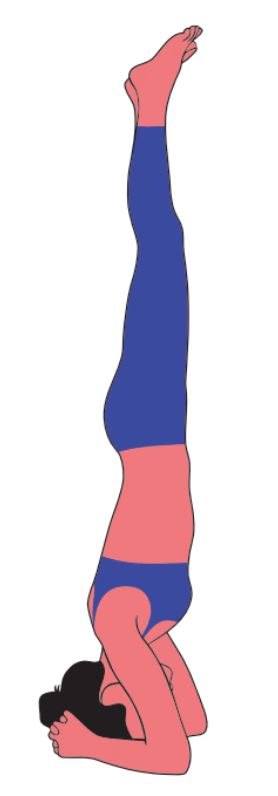
Supported headstand
- BENEFITS: Strengthening the upper body and abs, improving breathing
- ABS FOCUS: Rectus abdominis, transverse abdominis and your obliques engage to keep spine neutral and prevent you falling over. They also compress your internal organs.
- ALIGNMENT: From kneeling, place elbows shoulder-width apart and rest head into cupped hands. Raise hips into dolphin plank, walk feet inwards. Push down with elbows and raise one foot, then the other, into a reverse tuck position before straightening your legs, engaging abs throughout. Use a wall for support if helpful.

